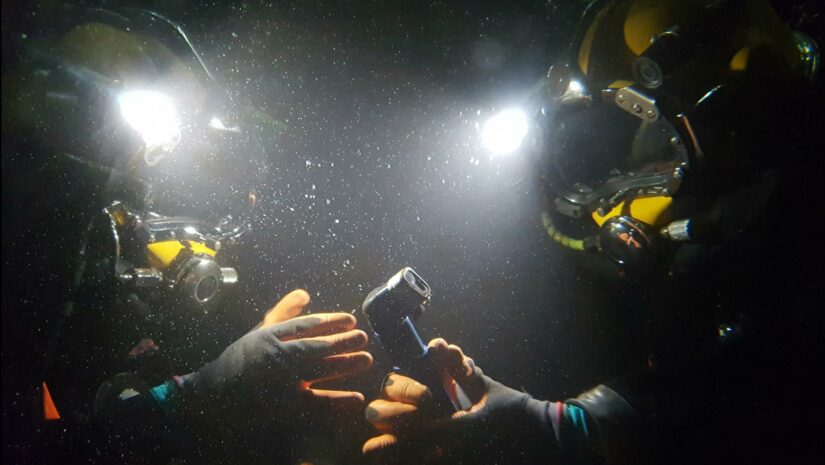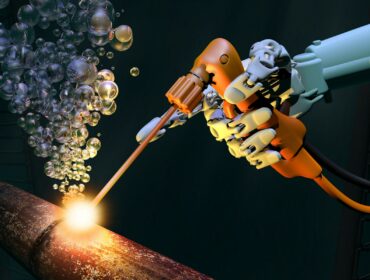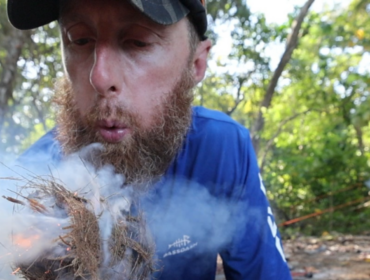Underwater welding is one of the many job opportunities available to commercial diving school graduates. Welder-divers are among thousands (in the US alone) of other commercial divers who work in the oil and gas industry, and they are responsible for performing dangerous tasks—like repairing pipelines, ships, dams, offshore oil drilling rigs, underwater habitats, and even nuclear power facilities—at great depths.
There’s a growing demand for underwater welders around the world, especially with the need to maintain and repair damage to oil rigs and other massive marine infrastructures. Admittedly, not many people are aware that the job even exists, but it does—and it pays well and comes with many opportunities for travel, exploration, and unique challenges for every aspiring professional diver.
If you’re after the thrill and fulfillment of becoming an underwater welder, find out how you can kickstart your career below.
How to Become an Underwater Welder

Be Prepared
One of the most essential steps of becoming an underwater welder is to understand the nature of the job, including the hardships that come with earning your certifications and the risks that will follow once you start your underwater welding career.
The underwater welding industry demands not only expertise and experience beyond a standard recreational SCUBA certification, but also total commitment, long hours of work and travel, a positive disposition, and a strong work ethic. Due to the demanding nature of the job, it requires every diver to be ready for a physically—and mentally—challenging career.
The job itself is similar to topside welding, except that the environment is different. And if you already have an idea about how welding works (joining metals together using electricity), you may find it baffling how underwater welders do it without getting electrocuted. This is one of the main reasons why the job is known to be quite risky, aside from the fact that you’ll be working in very dark, cold, deep sea industrial environments where you can also suffer pressure-related injuries.
The requirements for the job are seemingly simple: a high-school diploma (G.E.D) and a diving exam. While these are technically all you need to become an underwater welder, the competition is stiff so you’ll need to gain as much experience as you can and train for a variety of skills (rigging, underwater burning, TIG welding, among many others) so you have a better chance of breaking into the welding industry.
Bonus Tip: You can learn more about welding processes, its classes, and the qualification tests associated with the job in the AWS D2.6 Underwater Welding Code. Many welders use this as a guide for determining specific procedures and welds that they need to master in order to become successful in their chosen field.
Plan Your Career Path
If you think you’re ready to start a career as an underwater welder, you’ll need to plan the steps that you’ll be taking. The first and most apparent requirement is knowing how to swim. Chances are you already have some experience in breath-holding, so you can move on to the following steps:
- Earn a high school diploma or G.E.D. (12 years)
- Gain experience and earn a certification in topside welding (2-5 years)
- Enroll yourself in a commercial diving school and pass the physical exam (1 month)
- Earn certifications to expand your skill set in both commercial diving and welding (5-18 months)
- Find work through experience and networking (1-12+ months)
As you can see, it will take a few years of experience before you can even enroll in a commercial diving school and earn your underwater diving certifications. Once you pass the physical exam, you’ll need to take more time mastering your new skills and beefing up your CV to make yourself more attractive to future employers.
Gain Topside Welding Experience
Assuming that you’ve already earned your high school diploma, you can immediately start looking for local welding schools or programs that can teach you the craft above land. You’ll need to learn the basics of surface welding and the different techniques, as these will provide you with an advantage in the field and the ability to operate in the water safely.
Among the welding techniques you’ll be learning is shielded metal arc welding (SMAW), which is a very common technique that you will be using underwater. You’ll need to familiarize yourself (and hopefully master) these other techniques above water for underwater use:
- Gas tungsten arc welding (GTAW)
- Gas metal arc welding (GMAW)
- Plasma arc welding (PAW)
Unfortunately, there are many different types of welding certifications. You will be spending a significant amount of time figuring out which ones you’ll need to earn, especially since companies typically set their own certification standards and will probably have their own set of tests for you to perform even after you’ve proven yourself to be a certified welder.
In general, aspiring welder-divers will have to equip themselves with certifications and skills in the following skill areas:
- Surface welding
- Commercial diving
- Underwater welding
To help ensure that your schooling will be acknowledged by companies in the United States, make sure to enroll in welding programs with certification standards that are set by the American Welding Society, American Society of Mechanical Engineers, and American Petroleum Institute.
Find a Diving School
Once you’ve gained enough welding skill, experience, and certifications above water, it’s time to practice those skills underwater. But first, you’ll need to find the right diving school for you.
If you live in the United States, you can earn a diving certification by enrolling in any of the top commercial diving schools in the country, like the Commercial Diving Academy (CDA). These schools offer quality training and real-world experience within the classroom and of course, outside of it—in swimming pools and in the ocean.
Aside from ensuring that your choice of school offers underwater welding as a certification program, it would help to get to know your instructors. Check if they have extensive experience in underwater welding and take the opportunity to ask about the training facilities and equipment used to get a better idea of what training will be like in their school.
Bonus Tip: Consider where you want to work when choosing a school. If you prefer offshore commercial diving, go for the school that offers Unrestricted Surface Supplied Diving certification. If you’re more into inland diving, it will help to make connections with local companies who work with waterways, bridges, and other related freshwater work.
Get Certified
Once you get into a commercial dive school, it will take around a month to pass their physical exam. Spend the rest of your months earning all the underwater certifications you need to amp up your resume. Remember, your certifications will set you set you apart from other applicants, so don’t be in a rush to join the workforce. The more skills you have, the better and safer you’ll be underwater.
If you’re starting at the bottom with basic experience in swimming, you’ll have to earn a SCUBA Certification and Open Water Certification before working your way up to a Commercial Diving Certificate, typically before you can even undergo underwater welding training and certification.
Look for Work
Fortunately for commercial diving school students, many schools (like the CDA) have offshore and inland dive companies who regularly contact them to recruit graduates. The competition may be tough, especially with hundreds of other certified commercial divers applying for the same big companies, but hold on to your certificates proudly, remember what you’ve learned, and you’ll eventually find the right company for you.
Stay Motivated
There are many welder-divers who have invested their time and money just to get here, only to quit the water industry a little too soon. It may be because of the long hours, the danger, or even just the hardship of finding a job where you’ll actually be doing a lot of welding. But you’ve prepared for this, haven’t you?
If you can just adjust your expectations, you would be more capable of attaining long-term success in this field—or in any field, for that matter. Remember the reason that made you strive for this career, how far you’ve come, and how good you are at what you do. For many, the fulfillment of getting to contribute to the growth of the economy is enough for them to keep going. After all, somebody’s gotta do it!





